November 2018March 2019
T he L o op


THE JOURNAL OF FLY CASTING PROFESSIONALS

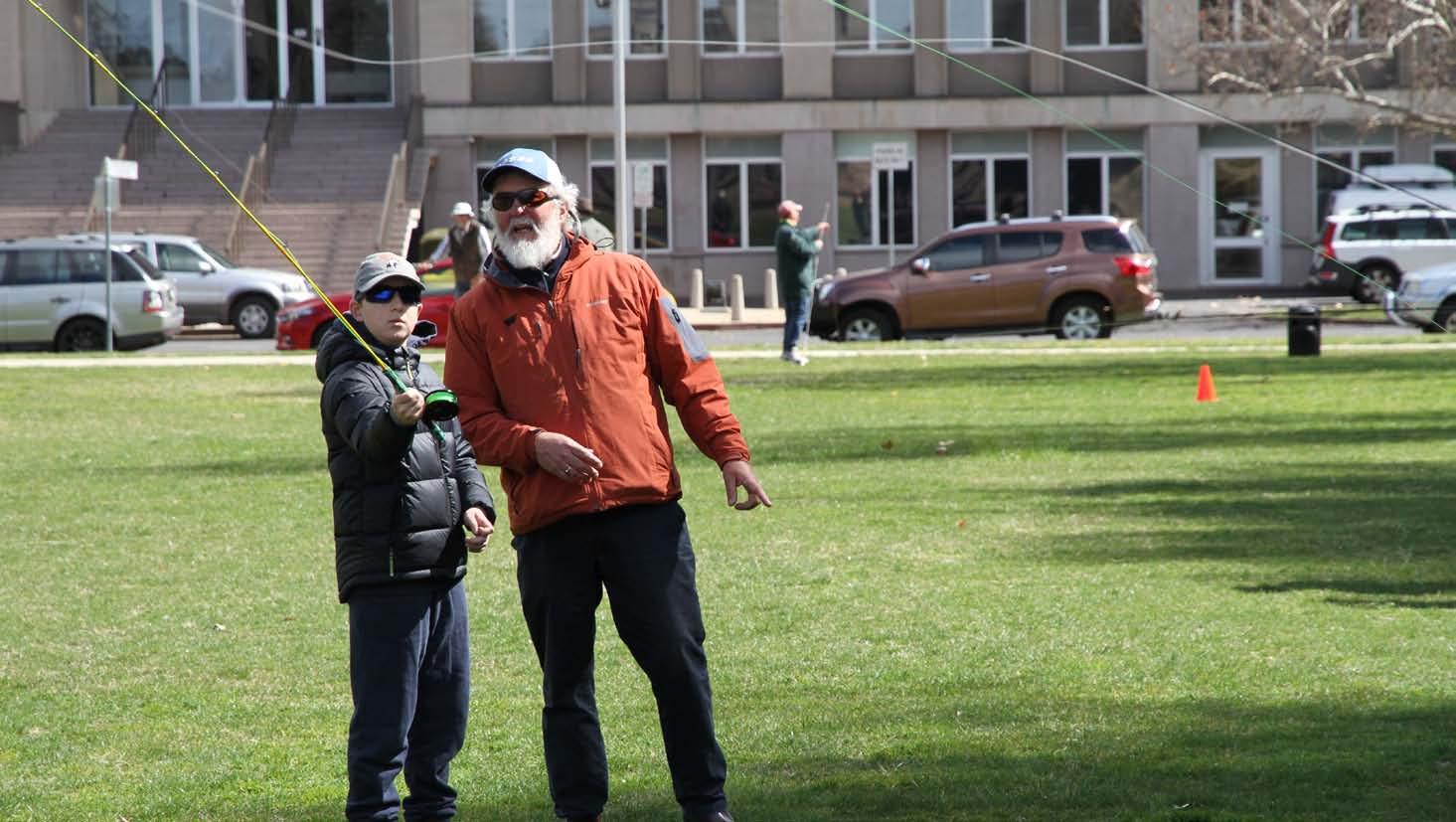
In this issue:
• Mentoring for CICP Exams by FFI Mentoring Committee
• International Fly Fishing Festival in Malaysia 2018 by Brandon Ho
• The New MCI Test Instructor’s Challenge by Pietro Brunelli and more...
Letter to the editor
A Response to the Letter to the Editor
By Aitor Coterón CI, Bilbao, Spain.Editor’s Note: This letter to the editor is in response to Mr. Mack’s Martin letter to the editor published in The Loop June - October 2018 edition disputing Mr. Aitor Coteron’s article published in The Loop March - April 2018 edition.
To fully understand the intent and context of this letter, please read Mr. Aitor Coteron’s article first in The Loop March - April 2018 edition, and then read Mr. Mack Martin’s letter to the editor in The Loop June - Oct 2018 issue. The policy concerning letters to the editor is changing, and this change will go into effect as of the next issue of The Loop. Please review The Loop’s official policies and guidelines on The Loop’s home page online as these policies are officially in effect for all future editions.
I wish to respond to Mr. Mack Martin’s comments on my article from the March - April 2018 issue of The Loop. I maintain that my assertions are valid and that Mr. Martin has misinterpreted several points of my article.
My article, as it is titled “Follow Me, Please” suggests, analyzing the often repeated saying that “the line always follows the rod tip” and shows that it does not always do so.
I pointed out that violations of the 180° rule (the cast’s direction being opposite an initial straight line position) can produce wide, crossing and swinging loop fly legs despite a straight rod tip path. Many of
these curved loops are inefficient control errors but I said some, like oval casts, can be beneficial. Simply, where the line comes from affects where it goes.
I presented six videos in support of my argument that a straight rod tip path alone is not enough to produce a good loop, and that the correct straight line tip path and starting line layout are also required. Mr. Martin’s letter bases many of its criticisms on his view that the only way to produce a fly leg that is not straight is to move the rod tip in a curved path during the casting stroke, but he states no concrete evidence for his positions in the letter other than his personal experiences.
Letter to The Editor
continued ...
I want to clarify that in my article, I was writing for an instructors’ magazine and not for students, but even so, Mr. Martin has misrepresented my argument in several significant parts.
The first is that I teach students not to produce a straight line tip path. Mr. Martin wrote:
“...we
do not teach the basic fundamentals of fly casting with a suggestion that the rod tip should not follow a straight line path.”
I do not either; rather, I said that I teach my students to produce a straight line tip path but also warned my instructor audience that things were a bit more complicated:
I wrote:
“So ‘if the rod tip goes straight, the line will follow’ is a very useful mantra for teaching casting fundamentals…The sentence above is something I have to repeat very often. So far so good, but is that all there is?”
I also hinted at an upcoming transition from discussing teaching to technical analysis for instructors— the main point of my article:
I wrote:
“...getting the line as well aligned as possible with our target at the end of the backcast is another [thing we need to get right], as we will see later.”
And then Mr. Martin states that:
“...[my] teaching is contrary to the FFI essentials that we teach.”
But I believe that my teaching principles are very much in line with the FFI understanding of and its teaching of fly casting. For example, Bill Gammel actually said:
“...the 180-Degree Rule is really good teaching terminology and I use it often. I would use it in the description of the Straight Line Path Essential if I were rewriting it.” (The Loop, Summer 2016, p. 13).
The general performance standards of the new FFI MCI test introduced earlier this year require that “all loops…be nearly opposite one another (180 degree principle).” The 180° principle appears as a checklist item in the examiner scoresheet for each of the 22 casting tasks in the new MCI test except for the curve, oval, and the changeof-direction casts. As I said in my article, oval casts are one example of when we might want to deliberately break the 180° rule and so are some curve and aerial change-of-direction casts.
Mr. Martin then resumes a criticism of things that were not present in my article, by writing:
“Moreover, teaching with a bead chain would add confusion to a student right off the bat.”
I did not write that I use beads to teach students, and in fact I do not. I explained that beads are not perfectly comparable to fly lines. I emphasized that the bead chain demonstration is an exaggeration of what happens with a real fly line. That video was followed by 5 more videos showing the this same principle in real-world casting with fly rods and lines but these videos are not mentioned in Mr. Martin’s letter.
THE
Letter to The Editor
continued ...
Mr. Martin then argues that any results derived from bead chain experiments are inadmissible, stating that he cannot see how using:
“…rolling beads…on a chain…with a non-flexible rod over a curved trajectory on a floor with an unknown coefficient of friction can be …even remotely related… to a smooth fly line put in motion with a flexible rod that moves its rod tip in a straight line path.”
My bead experiment only attempts to generally illustrate the uncontroversial and widely accepted concept that breaking the 180° rule with the line starting angled below the rod tip path is likely to create wide loops. First of all, the beads don’t roll, so their behavior in that regard doesn’t show any difference from a fly line. Apart from that, Mr. Martin can argue that the rod tip in the video may not have moved exactly in a straight line, but any deviation from it was dwarfed by the angle at which the chain cartwheeled upwards.
More fundamentally, if Mr. Martin had evidence that real fly lines behave very differently than bead chains when the 180° rule is broken and the tip path is, by Mr. Martin’s own reckoning, perfectly straight, it should have been presented in his rebuttal letter. Otherwise, Mr. Martin should have repeated and videotaped my experiment, breaking the 180° rule using the equipment and rod tip path of his choice, before submitting a critique of my article.
That he did neither before making public his argument, highlights a difference in approach. I experimented and published my evidence, while Mr. Martin has offered an opinion citing anecdotal evidence. On the subject of evidence, Mr. Martin says his school has:
“...videoed numerous casts…photographed with high speed cameras the rod tip and line moving against a black sky…our findings clearly showed that when the rod tip moves in a straight line path the line follows…”
This is all fine and good, but there are two problems. The first is that this evidence is not presented in his letter. The second, coming full circle to where I started my article, is that it appears to support a point of view that I clearly said I agree with as long as the 180° rule is complied with. I do not believe Mr. Martin has truly engaged the points I have presented and has misinterpreted my findings in his letter to the editor.
Thank you very much for the opportunity to present my views.
Cosigned by:
Sekhar Bahadur MCI, L2 Examiner
Bryan Martin MCI, THCI, L3 Examiner, CBOG, Bruce W. Richards MCI, L2 Examiner, CBOG Emeritus
Mark Surtees MCI, L2 Examiner
Click here to read
THE LOOP MARCH - APRIL 2018 Edition
Click here to read
THE LOOP JUNE - OCTOBER 2018 Edition
EDITORIAL
The Journal of Fly Casting Professionals
From Brian
DeLoach, MCI - Editorial Director at The LoopIn studying for the FFI instructor exams, I remember reaching a point where I’d read all the titles I could find on the study guide’s suggested reading list. I’d saved and searched hard for those rare, often prohibitively expensive books, and I read them multiple times. Yet even after touching the bottom of all that information, I was still dissatisfied with my knowledge; my own level of understanding was still lacking despite all these books and videos. When I discussed this with my mentor, Tom Rueping, before we started another practiceexam, he suggested going through the old Loop archives.
Then he told me I was another year out from testing… A hard truth to be sure, but it made for plenty of time to read, so I took his advice.
Some of these articles, especially from the mid 90s back when it was affectionately called The Tailing Loop proved to be challenging as they were not written for the casual, mass-market angler or the doctor’s office waiting room. These articles were written for and by what Mac Brown best describes as “true casting geeks” –those not merely looking for a quick fix to a tail, but for the underlying causes, the mechanical properties, and multiple teaching methods for correcting it. The Loop is a publication meant for this audience—the ones who are not satisfied with easy answers, the ones who not only accept but embrace the complexities of the cast and how to teach it. We move towards a more complete knowledge, but the jury is still very much out on the understanding of our sport. If you believe otherwise, go to a conclave and listen to the instructors debate teaching methods.
Go on a forum and simply whisper the word “transverse wave” and watch the chaos ensue. If all these complexities were well understood, and understood widely at that— this publication would be unnecessary.
But having been a student of this journal for years has made me believe that The Loop is now more than necessary; indeed, with the current state of angling, this journal is absolutely vital. With the rise of social media influencers and brand ambassadors pushing dubious methods and practicing questionable angling ethics, their credentials often limited to number of followers and hero shots of obese, privatewater trout, and the endorsement of catchy start-ups that come and go, a peer-reviewed journal stands as the substance in all this snake oil. We are proud to proclaim that the articles put into print here are the end-result of a process of revision and review between the author and a committee of FFI vetted experts designed with the professional in mind.
The professional educator ought to be dynamic, evolving, and reflective; with that assertion we at The Loop seek to foster a culture of diversity in thinking. This means challenging sometimes dearlyheld paradigms and methods, defying group-think, and reconsidering orthodox tenets. There will be seasons of creative destruction, and although submissions must adhere to the professional tone and rules of a peer-reviewed journal, if the source is reliable, the premise defended, and the data sound, no argument, however iconoclastic, will be censored to preserve a liturgy of thought.
Editorial
continued ...
Our agenda and mission is
1. to better understand the practice and mechanics of fly casting,
2. to better understand and practice the teaching methods of fly casting, and
3. to give voice to a diverse world of teachers, casters, and thinkers in the sport of fly angling.
4. To be a source of continuing education for professional instructors.
In this spirit, we will also be searching outside CICP for useful material that assists us in our mission for better practice and understanding. Sister organizations such as EFFA, ACA, and GAIA will be vigorously courted for information. Engineers and designers from tackle manufacturers, competition casters, and scientists from research universities will soon find their words and work appearing in The Loop, and while “casting geeks” and technical writers from all walks of life will be considered for publication, we will also embrace and publish the works of the poets. Students of the late Mel Krieger’s work will need no explanation for this.
Moving forward, we hope our material will generate a lively debate among the global community of instructors, and we anticipate many great articles and studies to come from these debates.
Brian DeLoach, MCI Editorial Director at The Loop Lee University Anglers Cleveland, Tennessee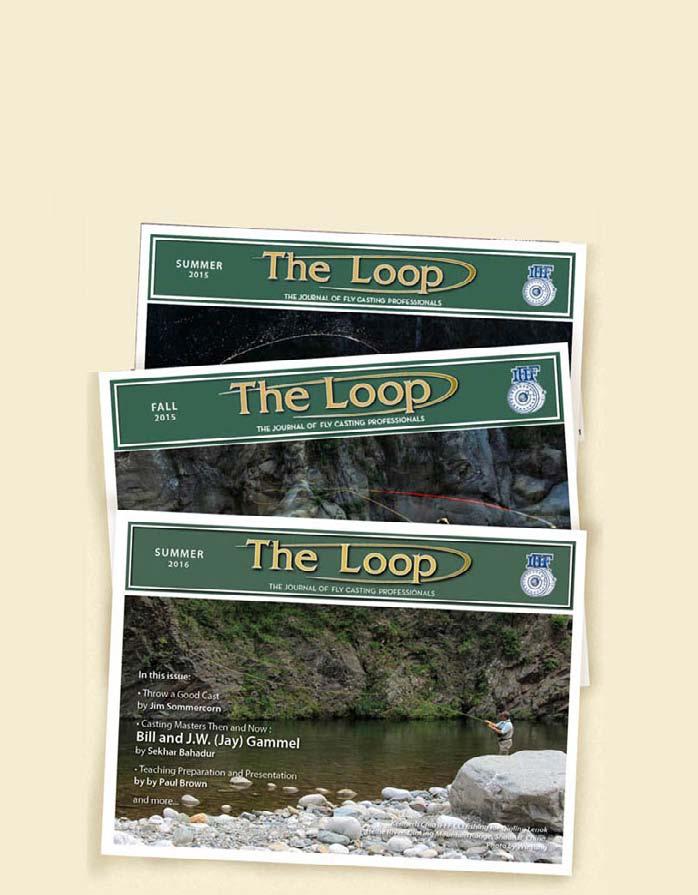
A Farewell to Friends:
The Loop is experiencing a time of change as we bid farewell to some of the outstanding writers, editors, and anglers who have led this publication for the past several years. We also wish to welcome a few new faces both in this issue and in the next issue as we continue to expand The Loop staff.
David Lambert, MCI
David has been the Editor-in-Chief for the past six years. Under his leadership, The Loop has become firmly established as a completely digital publication. His experience as a seasoned newsman has brought this journal to the highest levels of quality and integrity. We wish him happy days on the water and massive trout.
David, you are dearly missed here, and I will always be indebted to you for taking a chance on me and for introducing me to E.B. White’s Elements of Style. -BMD
Eric Cook, MCI, CBOG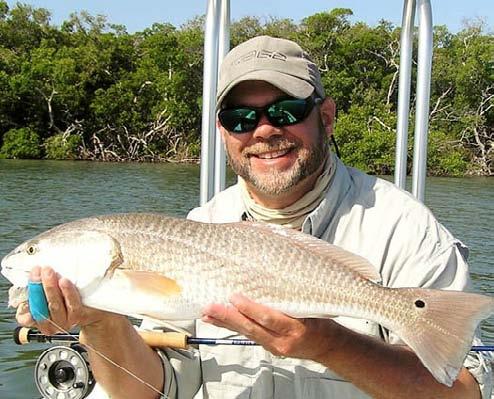
Eric has served The Loop as the Editorial Director and The Loop’s liaison to the Board of Governors of which he is also a member. In addition to his editorial duties, Eric’s background as an engineer and his vast knowledge of casting mechanics has been integral in enriching The Loop staff’s technical depth and ensuring that our content adheres to sound theory. His wisdom will be missed, and he shouldn’t be surprised to get a call from time to time from we at The Loop who need an article vetted for its physics content.
Though no longer at The Loop, Eric is still very active in CICP both as a tester in EDP and the Board of Governors. Eric, to you we wish more days to pursue those finicky carp on the fly.
Farewell to Friends
continued ...
John Bilotta, MCI, THCI
Though his official title was Associate Editor, John’s contributions to The Loop cannot be overstated. By his fellow editors’ admission John was the one hunting down stories and articles, finding those interesting people who had interesting things to say. John, as The Loop’s own “reporter in the field” FFI thanks you for your service and wishes you all the best as you swing the two-hander on the Potomac.
Please join The Loop in welcoming Mac Brown, MCI to our team of editors.

Mac is a man who needs little introduction. For decades he has guided on the Nantahala River in North Carolina.
He also served as Associate Professor at Western Carolina University (94-98) teaching their Fly Fishing Program. Mac published one of the most influential texts on our modern understanding of fly rod mechanics, Casting Angles, which has been endorsed by both FFI and ACA as part of their suggested reading lists for aspiring instructors. Mac was “Angler of the Year” in Field and Stream in 1999. His articles have appeared in Fly Rod and Reel, Fly Fisherman, Angling Report, ESPN TV, Outdoor Life, Field and Stream, Fly Fishing America T.V., Fly Fishing the World, and many others. In 2017, Mac was inducted into the Southern Appalachia Fly Fishing Museum Hall of Fame. In addition to serving as Associate Editor, Mac will also serve as a technical advisor by evaluating article submissions for sound theory. Mac, welcome to The Loop.
AIMING TO INSPIRE
by Peter Morse, MCI, AustraliaThe mediocre teacher tells. . .The great teacher inspires.
- William Arthur Ward“The quintessence of teaching is inspiration.” -Mel Krieger
Show your students your best casts. It’s how you inspire them to aspire—to get better.
I recall a high school teacher whose lessons were invariably interesting and engaging. He took great delight in acting out parts in Shakespeare’s plays, and he brought those dense works sufficiently to life to give them relevance. He always engaged us and inspired us to want to learn more.
Inspiration is a potent tool for teaching and learning, but there is a fine line between displaying knowledge and skill and showing off. Where is that line, and how does a competent instructor recognize it?
Good demonstrations are a necessary part of both teaching and inspiring others, and we should not be shy about casting well in front of students, but we should be conscious of casting too much.
By demonstrating what is possible, especially to someone who may not even have known it was possible, we try to both enlighten and inspire.
I clearly recall my first great moment of casting inspiration was watching from afar as an unknown caster threw graceful loops. I’d recently moved from Fiji to Australia, and I knew no one who fly fished, in fact I knew very little about this sport at all. But I had the gene in me; my father and my grandfather had been fly fishermen and I’d inherited their tackle without ever seeing them fish. I’d become an unsuccessful hack of a caster who’d never been taught, and who’d never even seen any proper fly-casting. I was operating without a yardstick, outside of what I’d been told in a shop.
Yet watching this inspiring caster (I’ll never know who he was) throw a beautiful loop with a greater precision than I had never imagined possible— seeing it unroll across the water like a laser beam, I’ll never forget the sight. I was mesmerized. I watched him from behind a tree as he caught a fish on a dry fly. I saw a fish eat a fly for the first time, but it was me who was hooked. It was an “Aha!” moment that changed my life, and that afternoon I caught my first fish on a fly. I had been utterly inspired.
Soon afterward, I met Gordon Dunlop, a fine Sydney-based angler and a keen student of fly-casting whose inspiration came from a book by Lefty Kreh. Without holding back (and with some showing off) Gordon showed me how he could send a shooting head into the horizon— more inspiration through demonstration. I was not intimidated, and I wanted to cast like that. I was inspired.
Aiming To Inspire
continued ...
Mel Krieger and Lefty’s early casting videos led me to more revelations and more inspiration through demonstration. Later, I met and cast with both those gentlemen when they came to Australia. Both were restrained in their demonstrations, throwing clean neat loops without pushing anything, those casts alone were inspiring, let alone the simple humility of their teaching, the absence of a “look-atme casting” attitude.
Tom White also came down to Australia in the late 90s, and I was asked to take him fishing on a hot day in the middle of a drought. With low water flows and high water temperatures, the fishing was uninspiring, but I sat in the grass and watched Tom work on a casting move that many years later I recognized as a Snap-T. I had no idea who Tom White was, and he didn’t attempt to teach me anything, he just cast, and I watched and learned and was further inspired.
Fish and fishing provides us with moments of inspiration as well, moments when all that work in the park to throw curves, mends and combinations of the above leads to catching fish that previously were out of our league.
Many non-fly fishers believe that fly fishing is limited, only effective in some circumstances and under some conditions. So, I think it’s not only good, but necessary, to show students what’s possible from the beginning. The better way to do this is to demonstrate at a level and in a style that’s aimed to inspire, not to intimidate, and not impress – to show what can be done with fly fishing tackle, to demonstrate that “this is where I want to try and take you, maybe not today, but I’m going to plant some seeds for your future.”
So what’s the difference between an inspiring demonstration and one that benefits the instructor more than the student?
I believe the difference is in the demonstration’s relevance and its brevity. Demonstrations should have a specific intent, and that intent needs to be stated, then demonstrated briefly. A demonstration of what is possible can be woven into instruction, but it needs to be brief and precise.
In terms of relevance, If you can relate a casting demonstration to a fishing situation, it will inspire. Give it a framework, tell a story about it to make the demonstration more interesting and therefore more inspiring. Show your students that, if applied correctly, sophisticated casts like rolls, reaches, and aerial mends will help them catch more fish.
As teachers, we should not be shy about demonstrating our skills and the casts we know, but the demonstrations should be relevant to the lesson. and it should be well explained, slow, specific, precise, and brief, with an opportunity offered to repeat it by asking, “Any questions?” It may well need to be repeated later in a one-to-one session as you make your way around a group.
Compliments always inspire students. As instructors we should intersperse our instruction with compliments, even if it’s as simple as: “That was a better loop” or “That’s starting to come together.” Remember that endless, repetitive instruction usually only ends up with an uninspired student. If a student just isn’t getting it, try giving them a demonstration designed to inspire.
About the author: Peter Morse, MCI from Leura, NSW, Australia. Peter is also Associate Editor of The Loop
International Fly Fishing Festival in Malaysia
Taman Botani, Shah Alam, Kuala Lumpur, Nov 2018
 by Brandon Ho CI, Malaysia
by Brandon Ho CI, Malaysia
Mention Malaysia and images of jumping sailfish in the clear blue water of Rompin come to mind. In the tropical rainforest, rising giant snakeheads and speeding jungle perch are constantly challenging anglers in the Royal Belum State Park. In the pristine jungle streams, the golden mahseers follow your dry fly before rising to gulp it down, giving you the adrenalin rush fly fishers live for. It looks and sounds like a fly fisher’s paradise and yes, it is, and fly fishing is gaining popularity in this part of the world. Located in Southeast Asia, where the temperature is mostly warm ranging from the mid 20s to mid 30s (Celsius), it offers the best of two fly
fishing worlds, fresh water fly fishing and saltwater fly fishing. In the last week of October and the first week of November 2018, the Fly Fishing Association of Selangor (FFAS) organized an international fly fishing event in Taman Botani, Shah Alam, 25 minutes away from the capital, Kuala Lumpur. It was an ambitious event, attracting guests and visitors from all around the world. This event also served as a testing event for the FFI CCI, MCI, and THCI examinations. It was also an event which created history being the first in the wider area.
continued ...
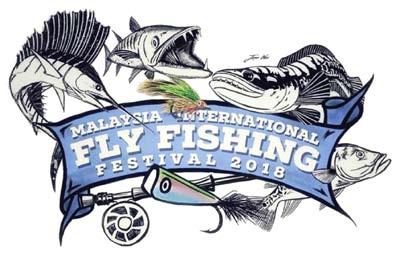
The preparation for the CICP for the Chinese candidates began in 2017. Wang Yong was the first Chinese CI to pass when he took CCI during the event in Lembang, Indonesia in May 2017. With his formal recognition in fly casting, he began to actively promote the sport to his citizens. He is one of the pioneers in the sport, and he knew if the sport was to grow, international, formal recognition would be the necessary means. He is one of the organizers of the Heilong Jiang Fly Fishing convention which went into its 3rd year in 2018. Asian’s fly fishing community is very closeknit, and when such an event is organized, CCIs from Malaysia, Taiwan, Macau and Singapore went to support the event. The CCIs play a vital role in helping the candidates prepare for the exam.
There is a general understanding that countries in Southeast Asia take turns to organize international fly fishing events. For example, Malaysia organized the first one in 2012, followed by Bandung, Indonesia in 2013, Taiwan in 2014, Sabah, Malaysia in 2015, and Lembang, Indonesia in 2017.

This year it is back in Malaysia. On the home front in Malaysia, the preparation for the International Fly Fishing Festival began almost a year in advance. From the selection of the venue to the suitability of the exam grounds with special attention to the MCI and THCI exams which required “on the water casts” were put under the microscope to ensure all the requirements would be fulfilled. Once that was done an event team went into full swing to get the necessary permits and paperwork done.
The event ran from 31 October to 3 November; the FFI Instructor examinations began on 31 October with the CICP workshop and also the theory examination for the CCI candidates. The public event was from 2 to 3 November. The candidates began arriving from 27 October and the FFAS volunteers were busy shuttling the guests and candidates from the airports to the hotels. The next day, work started early. After a traditional Malaysian breakfast, the candidates headed to the nearby field for a final briefing and preparation for the exams. CCIs from Malaysia, Taiwan, Macau and Singapore came together to do mock tests for the candidates. They were given a last minute tune up, and all questions were clarified and answered before the big day. Every candidate was given a run down of the tasks and the requirement for the exams. Everyone worked hard and the best feeling was seeing how everyone was so committed to work together to ensure success for the candidates. Some of the Malaysian CCIs were given briefing in their preparations to be interpreters for some candidates who would be doing the test in their own languages. This exam saw candidates from China, Taiwan, Macau, Hong Kong, Mongolia, Indonesia, and also the host country, Malaysia.
The venue for this event was Taman Botani, a natural park for the city dwellers to take a breather from the hustle and bustle from city life.
Festival, Malaysia
continued ...
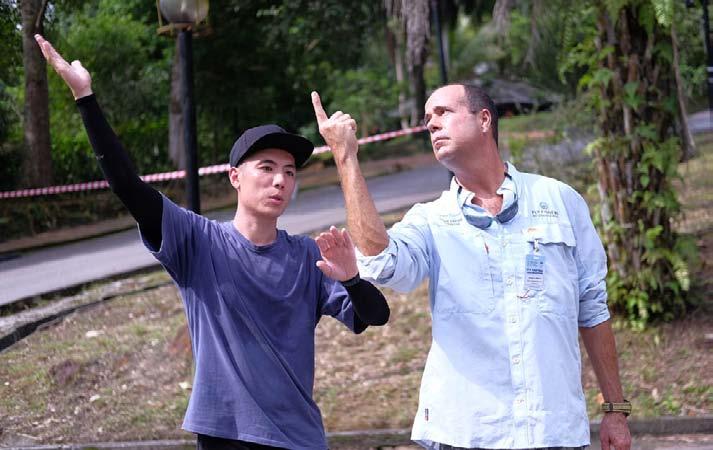

In the park, there is also a famous fly fishing pond where fly fishers can pit their wit against the hard fighting Pacu, known to bite off leaders with their sharp, strong teeth. The exams were done in two areas, one in Rimba Camar where two CI exams could take place concurrently and another in Empangan Air Kuning, where the MCI exams took place. It was a hectic day for the examiners as each testing team had to examine at least 3 candidates in a day. There were a total of 16 CIs, 3 MCIs and 1 THCI candidate. The examiners for this event were Thomas Berggren, Bryan Martin, Dr. C.K. Ling, Peter Morse, Jimmy LeMert & Bob Young, The afternoon showers did not dampen the spirit of the candidates and the examiners. In Malaysia, the climate is basically warm and humid, and the end of the year brings more rain, giving the opportunity for the jungle perch to feed and breed. This is also the best time to target these elusive, hard-fighting fish.

THE LOOP, NOVEMBER 2018 - MARCH 2019
IFF Festival, Malaysia
continued ...


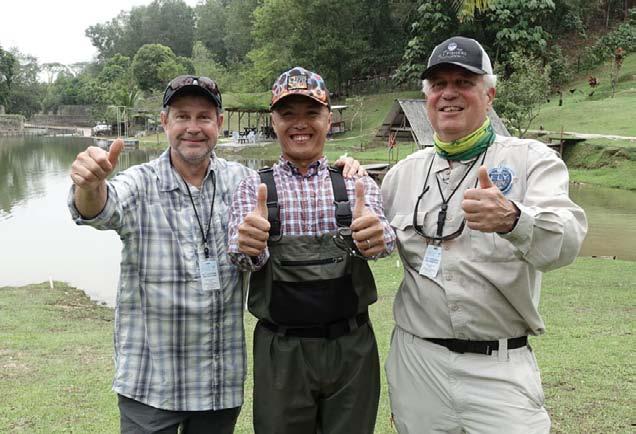
Despite the rain, the examination schedule went on without delay. After 4 days of exams, the fly fishing world welcomed a new Two Handed Casting Instructor, Marco Teng from Macau and 8 Casting Instructors, including the first CI from Mongolia Ganbaayan Butartohtokh.

THE LOOP, NOVEMBER 2018 - MARCH 2019
IFF Festival, Malaysia
continued ...


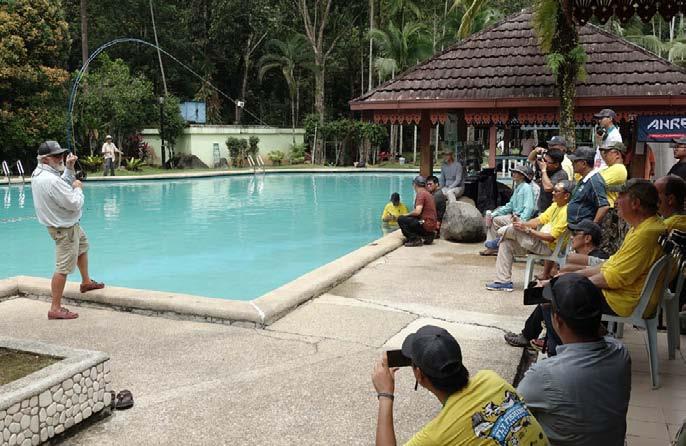
The 2nd and 3rd day of the event was open to the public. This event drew a huge crowd and the main attractions were the international presenters and world renowned fly tyers. Big names in the industry like Peter Morse, Thomas Berggren, Bryan Martin and Antti Vappula presented in their areas of expertise. While at the fly tying station, world famous fly tyers had their vises out to showcase their unique fly patterns.

THE LOOP, NOVEMBER 2018 - MARCH 2019
IFF Festival, Malaysia
continued ...
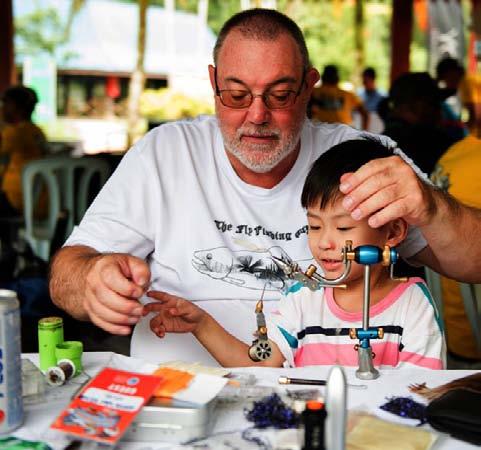
Hans Van Klinken sharing his fly tying knowledge with a young enthusiast.
Among the celebrities were Hans Van Klinken from Netherlands, Wang Yong from China, Martyn Whit of Flicking Feather fame, Antonius Moelyadi from Indonesia, Dron Lee of Fly Tying Nation fame, and several other prominent Malaysian fly tyers
The public also had the opportunity to talk to experienced fly casters to learn first hand about what fly fishing is and how, as fly fishers, we can protect the environment through conservation, preservation, and catch & release.




THE LOOP, NOVEMBER 2018 - FEBRUARY 2019 MARCH 2019
IFF Festival, Malaysia
continued ...


FTN Asia Distribution, Pure Fishing (Malaysia), and Tackle Box Adventures had booths during this event to showcase their products. Antti Vapulla from Vision, Australia and Milan Styke from Dohiku also made a guest appearance to talk to fly fishers from this part of the world.
After the hectic 4 days, the event wound down to a close with a lucky



draw where almost everyone present received gifts including rods, reels, fly fishing accessories, fly tying materials and other fly tying accessories. However, this was not the end of the party yet. A fly fishing excursion to the Royal Belum State Park to target the giant snakeheads and jungle perch was organized for the international guests including the examiners and the newly minted Casting Instructors.


THE
IFF Festival, Malaysia
continued ...

These two house boats is our accomodation during our stay at Royal Belum State Park
After sleeping in after the day of the event, a convoy filled with fly fishers eager to get a taste of what Malaysian fly fishing has to offer, left the city and headed north to Royal Belum State Park. The journey took about 5 hours with occasional stops at the rest area to relieve the bladder, fill up with coffee, and also to stretch those tired legs. There was a quick stop at the small town of Gerik for a much anticipated dinner, but we then headed to Pulau Banding Jetty, the gateway into the national park. During this short 45 minute drive, 4 wild elephants were seen moving slowly along the road. This is how wild this area gets! A few short months ago, a tiger was filmed swimming in the lake before running off into the thick forest.
The team that went on the Belum fishing adventure. Most of the team were first timers to this part of the world, yet they did well in catching their first Snakeheads and Jungle Perch.
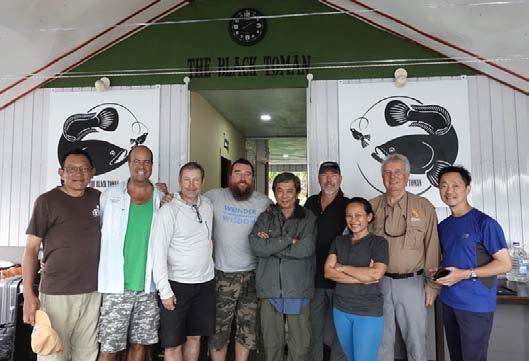

The mysterious and enchanting Royal Belum State Park. During this trip, the rain was our constant companion and we didn’t get to see much sun. The cool jungle air makes fishing a relaxing affair.
IFF Festival, Malaysia
continued ...

Royal Belum State Park is a 1175sq./km park within the Belum-Temenggor Rainforest gazetted in 2007 to protect the menagerie of tigers, tapirs, panthers, Asiatic elephants, and the Sumatran rhinos. This rainforest system is believed to be over 130 million years old, older than the Amazon or Congo. The lake in the middle of the Belum-Temenggor rainforest is man-made. It was flooded in the construction of the Temenggor Hydroelectric Dam which began in 1974. Besides generating electricity for the country, it also had a military significance. The flooding served to cut off the communists’ infiltration route from Thailand. Now it is a great place for fly fishers and nature enthusiasts to be out in the pristine rainforest connecting with nature.
The weather during the trip was wet with showers in the morning and afternoon. This did little to dampen the spirits if the fly fishers. They headed out from the mother boat after breakfast without missing a beat. The sun was hiding behind the clouds but they were fishing with earnest.


IFF Festival, Malaysia
continued ...
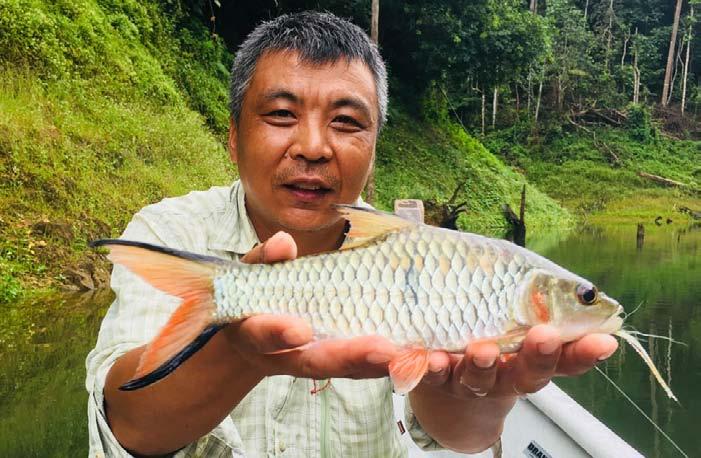
Though Sebarau (Jungle Perch) not as big as the snakeheads, they do give a hard fight and would not give up even when close to the boats.
Everyone thought fishing would be bad, but being optimistic and determined as all fly fishers are, they cast at all the fishy spots and Belum must have relented because it gave everyone some good fish. The beautiful toman or giant snakeheads were out with a vengeance, and those with the opportunity to hook them enjoyed a great fight. The many submerged trees added to the fun and also the frustration when these crafty predators feel the hook in the mouths. The jungle perch, locally known as the sebarau, gave a good account of themselves too.
There is never a shortage of flies. This trip, there were 3 world class fly tyers, Hans Van Klinken, Dron Lee, and Wang Yong, setting up their fly tying stations and modifying the flies as the fishing progressed. New flies were tested, and effective ones were recorded for future
reference. This is indeed a great trip where the fly fishers really do have the upper hand.
At the end of 3 days of hectic fishing, it was time to leave this rainforest paradise and head back to the city where the international guests would catch their flights back to their respective countries. It was a great adventure where new friends were made, old friendships rekindled, and memories forever etched in the minds of all those present.


THE
FF Festival, Malaysia
continued ...
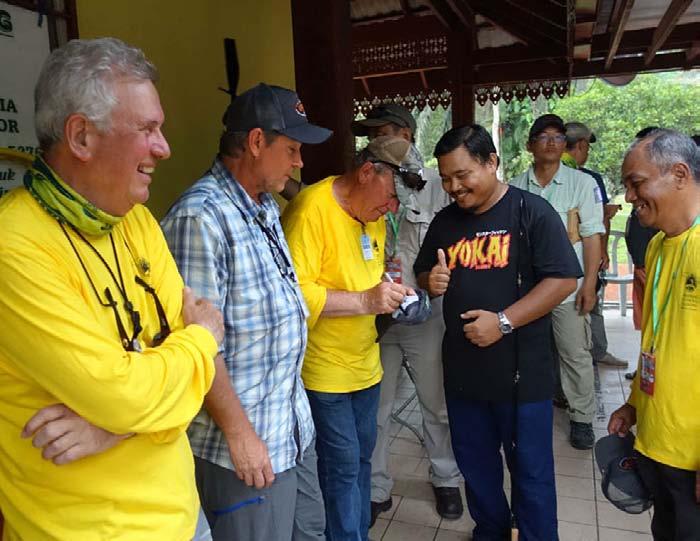
Festival attendees queing for autograph from the visiting MCIs from L to R: Bryan Martin, Thomas Berggren & Bob Young
This event was hugely successful, being organized in a region where fly fishing is slowly but surely gaining a firm foothold. More and more people are looking at fly fishing as an art and are willing to give it a go. Many countries in this region are organizing fly fishing events and the success is evident in the number of events held yearly with very encouraging public participation. The number of CIs, MCIs, and even THCIs are rising, and they are doing an excellent job creating awareness and promoting fly fishing. The concept of conservation, preservation, and catch & release is becoming more and more popular and acceptable, and this is only just the start. More exciting things are happening in this region, keep an eye out for it.



The 3 people instrumental to the growth of fly fishing in this region in general and the success of this event specifically are Dr. C.K. Ling (MCI), Bintoro Tedjosiswoyo (CI & THCI) and Dron Lee (CI).
The Fly Fishing Association of Selangor also deserves a special mention as the committees and volunteers worked tirelessly for months to make sure everything ran smoothly.

About the author:
Brandon Ho’s passion for nature has led him to discover the art of fly fishing and fly tying. He is an educator by profession but a full time nature lover who believes in the preservation and conservation of nature for the next generation. He loves to travel and share the art of fly fishing to the world.
The New MCI Test:
A VERY COMPLEX AND IMPORTANT INSTRUCTOR’S CHALLENGE
Pietro Brunelli, MCI - ItalyThe journey to the MCI has been for me one of the longest, hardest, and satisfying trips into self-improvement in all my life; It was also a lot of fun. “Fun” is not a term we often associate with the exam. I naturally failed the test the subsequent year after became certified as a CI. As time passed, it was necessary for me to expand my experience in the application of different tackles and materials, as well as other fly casting approaches to become a better angler and instructor.
I believe that with the new MCI test, passing or failing is not the point. Failure stays in the options with such a difficult test, but the strong difference is “how much we learn” from a potential failure that may happen, how much we’ll be able to self-analyze and receive the right input from the examiners who, exactly as they say in advance, prior the test: “we really want to pass you.” Everyone starts from a 100% full score and then, the way the candidate performs on the test will maintain or reduce this score, to the minimum acceptable score. But we should all certainly know that this “minimum” in the new MCI Test is very high. This is a top quality certification with a very high level standard.
Approaching the new MCI Test means a further jump for us in to a deeper dimension of knowledge and learning, our perspective changes, we have now to monitor not only a direct relationship between student and instructor, but a multiple relationship of factors:
student-instructor-mentor, and this means the necessity of analyzing the crossing behaviors of a student and his instructor, and at the same time, for us, we must pay attention to our approach as mentors with the instructor we are going to “build.”
What I thought was a good and easy starting point for an aspiring Master Casting Instructor, is to follow the “Triple C” preparation method:
-Constance: shorter but more constant practice sessions are to my view, more productive than isolated, longer, fatiguing casting sessions. Candidates should constantly use and alternate grass and water sessions.
-Concentration: this test requires a long preparation, and it will be a very long test; we must keep in mind the necessity to be able to maintain a high level of concentration and focus without distracting ourselves.
-Consciousness: this test calls for responsibility, not only because we are going to represent the highest FFI casting standards possible, but also because the role we are aspiring to is highly involved with education and with the formation of the next generations of fly casting instructors.
The New MCI Test
continued ...

Our behavior and our tendency to be mature, quality people needs to be held to a very high standard along with a positive, constant tension.
That is—perpetual self-examination of what the standard of excellence we aspire to versus our actual behavior.
Another three inputs, still important to my opinion beyond the Triple C include:
1. Reading the test and knowing more than just what the words say; know exactly, for each single written line what is requested to be done, what the terms mean, how they can be interpreted, what the expectations are, what are the parameters of evaluation contained in the single task boxes.
2. Play around with the tasks: if a task is required to be executed at a certain distance, we should be able to do the same task both shorter and longer than expected. Every cast should be known in least two different ways and rod handle styles. This point reinforces the control concept. This is a test based on a high quality casting and line control. Playing around with the tasks, in my point of view, means as well being able to vary the anchor points, the loop shapes and sizes, to be able to produce correct and incorrect actions on command, reaching that very high level of line control I was mentioning above.
3. When practicing, it may be very helpful to constantly speak and imagine we are referring to our examiners, explaining the tasks to them.
The teaching section is for sure as difficult as the main casting tasks. The new MCI test has the focus to put perfectly together the quality of candidate’s execution with the conciseness and appealing clarity that should distinguish a high quality Master Casting Instructor.
This is not only a difficult fly casting test, this is more about the person, I would say the personality and charisma of the candidate. She or he should be a model within his fly fishing/casting community, an example to be followed. He or she ought to be a pleasant and enjoyable person, with the right balance of strength and authority as well as good manners, politeness, and an overall accommodating attitude.
This is a test for instructors who are already teaching students; what hopefully we are going to do with this testing tool is to check how good an instructor teaches to his students, or more specifically, how an aspiring master would teach to an aspiring instructor. The capability to give the right stimulating feedback while still being able to correct when necessary, is something that comes together with the casting quality of the candidate; they are not separate aspects within the preparation.
Mentoring is a fundamental point in your preparation. At this moment I will never suggest to “attempt” an MCI test without having previously had several mentoring sessions with the right people here in the FFI.
Every step in your preparation for the new MCI Test should be, ideally, highly structured, clear and well organized; you are the manager of your test, and no one else will spend all the time with you to check how good your setup organization is.
I say it again: play around with the tasks: change the anchor points, change the angles of the change-of-direction casts, try, in synthesis, every possible variant so you’ll be able to control and correct every potential situation.
Use the wind, if present, as a friend, and play with it as well; do not hesitate to ask for a change of the casting direction during the exam. Examiners are there for your test, and it has to be good and comfortable for you.
A last final note on mentoring: this aspect has been fundamental for myself; do not be shy, and ask for mentoring from the right persons here in the FFI. Go for it with no hesitation.
I had three amazing mentors: one in Austria and two in the UK. Our journey in the preparation was funny, pleasant, challenging, and finally, successful.
All of my ideas exposed here are the result of this path walked together with my mentors, and it is beautiful to have the opportunity to tell others about this beautiful journey.
About the author: Pietro Brunelli was Born in northern Italy, he has a 33 years experience in Fly Fishing.Store manager and business owner in Fly Fishing, is as well Outdoor Guide, Fly Fishing guide, Fly Fishing and history author since 15 years as well as passionate photographer.
Casting Instructor in two Italian schools, he became FFF CI in 2008 in Whitefish, MT, then FFI MCI in Austria, 2018. He is involved in conservation and outdoor projects.”
“Get it there, and Get It There Fast!”
From the Editors

Meredith McCord (Texas, USA) speaks on casting for IGFA, practicing for fishing, and why a bad cast can spook a fish in more ways than one.
From the Editor
Two years ago, on the long drive from Chattanooga, Tennessee to the White River in Arkansas, a lull in the conversation five hours deep sent us to our phone screens. From the front seat my uncle said “Have you ever heard of Meredith McCord” I looked over his shoulder and saw him scrolling through Instagram. I had not heard the name, and I wasn’t interested in seeing what I assumed to be another angling personality pushing a product, but he kept at it, and before long we had researched her business website, seen footage of her chasing saltwater species with Lefty Kreh on Buccaneers and Bones, and began reading articles by and about this angler’s exploits; far from being the one-trick pony fly fisher just dragging nymphs through a riffle, I saw instead a woman who truly embodies the spirit of The Compleat Angler.
McCord has fished for freshwater and saltwater species using every technique we’ve developed, from Peacock Bass in the jungle and Bull Reds in high wind, to two-hand work with Atlantic Salmon in Iceland.
“Get it there, and Get It There Fast!”
continued ...
The fly fishing globe trotter herself: Meredith McCord, multiple (and I DO mean multiple) IGFA record holder, and the queen of the new generation of lady anglers manages to squeeze in time for a phone interview in between her Redfish outings in November. If you’ve followed her social media accounts and the dozens of articles written by and about her IGFA exploits, you know this is an angler of authentic substance. What follows is an excerpt of McCord’s interview with The Loop:
You mentioned earlier that you’re using as small as two-pound test fluorocarbon as your class tippet on an IGFA regulation leader; you must be using tiny flies. How are you managing this in pursuing a heavy, saltwater fish?
McCord: First off, let me say that trying to tie Bimini twists on either end of the class tippet in the boat is like handling a strand of hair in high wind. And the other thing is that I’m not restricted to using tiny flies; on this same set-up I’m using up to a size four pattern with usually some good dumbbell eyes to help it get down quickly in front of the fish’s sightline. It’s still a relatively heavy bug!
Still, on two-pound test, you must be high-sticking or slap-casting right by the boat. Surely this narrow diameter severely limits your ability to target fish at distance.
I do those things occasionally; it’s amazing how close some fish come to the boat, but I can still make a cast out to sixty or seventy feet fairly easy with this leader system, even with the two-pound test section.
But it’s a generally accepted rule that tiny little tippets lack the mass to turn over a bug of that size and mass; how are you getting it there?
Well, you said “turn over,” but I said the fly reaches that distance (Laughs). The loop as we think of it with the fly-line and the butt section of the leader is getting it to a point, and then the momentum of the bug takes it the rest of the way, and it still lays out beautifully fly first. It doesn’t unroll to the two-pound section and then just pile on itself; it makes the distance.
Tell me about how you practice and what tips you have for others for casting in Saltwater.
You can practice on grass, but it’s not the same. If at all possible, practicing on the water is a must and practicing with the same set-up that you’re going to be using on the flats— fly and everything. A piece of yarn is good for practicing for freshwater and throwing weightless, feathery flies, but if you are going to be throwing heavy streamers on your trip, then practice with a similarly weighted fly. I believe that there is a difference between casting practice and fishing practice. Practice like you’re fishing; don’t practice like you’re only ever going to false cast; shoot the line! One of the most important things I have to remind myself of and others is “You do not need four false casts to send it forty feet!” Just get it there—Fast.”
Another integral part of practicing is to prepare for the wind, whether blowing into your casting shoulder or casting into a head-wind. The wind will not always be favorable, and it can mentally wear you down over an eight or ten-hour day; it tends to cause your cast to deteriorate. I’ve seen, in both myself and other anglers, a tendency to overcompensate by pushing the rod—muscling the rod instead of being intentional and mindful of generating line-speed by good hauling technique which again is why perfecting the double haul is so essential in salt water fishing.
“Get it there, and Get It There Fast!”
continued ...
Muscling the rod and not letting the tip do its work will not only fail to form the loop/delivery you desire, but when using your body-arm to force the line/fly, we might also spook the fish.
Like a sloppy cast? Are we just talking about a bad laydown?
That too, but that’s not what I’m talking about here. One of the reasons why I try to keep the line speed in my hauling hands rather than in pushing the rod. Specifically, on flats, you’re in these small, sixteen-to-eighteen foot skiffs. When the angler begins to muscle the rod, they begin to sway and move their body, that in-turn causes the boat to rock which sends out pressure waves that fish can detect. So then, not only are you exhausting yourself, you’re sending a sloppy cast to a potentially spooked fish that is now aware of your presence. Use your hauling technique, but keep your body silent; think stealth mode.
Is there a specific model you find to be most effective for yourself or others?
When I was filming Buccaneers and Bones with Lefty a few years ago, he introduced me to his imaginary shelf or 3-shelf principle. I have resorted back to this many times myself, and I’ve encouraged others to follow his model. He was truly a great instructor and never took himself too seriously. His laughter still rings in my ears.
I hung up with Meredith feeling more educated having never thought of a bad cast being more than just a sloppy lay-down and rethinking some of my own leader formulae. With most of the flies in my box reaching the six-inch mark, I’ve always reached for the stubby, fifteen-
pound test, but now, maybe we can look to explore the other benefits in terms of sink rate and visibility of a thinner diameter beyond just pursuing a record.
Now, on those long trips with my two best fishing buddies, often times Rich will say “Let’s see what McCord is up to this week!” and he produces an article, a video, or a photo of McCord crushing another record, chasing another finned dream, or pushing for conservation with the Bonefish & Tarpon Trust, out there being the angler that I and many others aspire to be.
Meredith’s website is at http://meredithmccord.com/

Kick The Kinesthetic?
By Greg Stuart, CCI, Atlanta, GeorgiaAs instructors we realize there are three major types of learning: auditory, visual, and kinesthetic. With auditory learning we learn by hearing explanations of visual images transmitted through hearing such as Flicking-the-apple-off-the-stick. with visual learning, we learn by observing someone else make a cast the correct way, watching a video demonstration or studying diagrams. The kinesthetic, hands-on approach, is commonly understood to be someone else physically placing a hand on the rod or arm to cast along with the student.
The kinesthetic approach is useful for more than teaching power application alone as concluded by the Lee University research team in 2016, and this article aims to bring awareness to other ways instructors can successfully use the kinesthetic approach in addition to power application. We have all been taught that actually holding the rod or a student’s hand is the kinesthetic approach, but kinesthetic learning is when a student learns by actually carrying out physical activity. The great Mel Krieger, in the Spring 1998 edition of The Loop, wrote there “IS a Holy Grail to learning to fly cast – and that is to flycast!!!”
Marie Rippel is the founder and curriculum developer at All About Learning Press. In her article “Kinesthetic Learning: Learning with Your Whole Body,” Marie Rippel states that “[k]inesthetic activities help ingrain into the long-term memory by turning a lesson into an experience.” She suggests that a great side benefit is that kinesthetic learning is fun. Neil Fleming’s VAK/VARK Model lists Kinesthetic Learning as one of its 4 sensory modalities. He writes that, “Tactile/
Kinesthetic learners prefer to learn by experience— moving, touching, and doing.” Cheryl Koker, Ph.D., a professor with the Department of Health and Human Performance at Plymouth State University, writes in her article “Accomodating Students’ Learning Styles in Physical Education” that the “Kinesthetic Learner wants to know what the movement feels like. The correct feeling becomes the frame of reference from which to compare. Simulations, guidance, and repeated practice assist the kinesthetic learner in developing this frame of reference.” None of the neurological studies that I have read mention that kinesthetic means the student is literally touched and moved by a teacher/instructor. It simply means they are doing the actual movements themselves. FFI should work to expand its understanding of kinesthetic to reflect the wider definition of kinesthetic to achieve its full value as a teaching approach.
A perfect example of the kinesthetic approach widely recognized as successful in fly casting instruction would be pantomime method. When a student does any physical motion or places his or her hand on the rod at any time that, in fact, is kinesthetic. So, simply casting while you give the auditory approach or pantomime is still kinesthetic albeit a multimodality approach at that point.
I use the kinesthetic approach every time I teach. I’m always giving the auditory approach while someone is casting. If a casting arc is too narrow or wide I’ll tell them what to change while they are casting. You can positively reinforce the correct motions through the auditory approach while the student is reinforcing through the kinesthetic approach or overall feel of the cast.
Kick The Kinesthetic?
continued ...

If they can’t get the auditory approach we can go even more kinesthetic and hold something like a pool noodle in the front and back and provide the stopping point for them to feel the proper arc. MCI Dayle Mazzarella uses the pool noodle, but I’ve had MCI Rex Gudgel grab the rod on my back cast to show me where my rod actually stopped. Dayle even uses a literal hand-on kinesthetic approach in the original sense to teach the double haul. Also, I will use the literal hands-on approach to teach power application if a student is not getting it through other approaches.
It is usually a brief time that I’ll cast the rod along with the student, and I do not see how it can be viewed as a negative approach as long as it’s not the only approach.
This brings a new light to the kinesthetic approach that has been argued as ineffective. You simply can’t learn to cast by the visual or auditory approach alone. You have to pick the rod up and cast! This means that everyone is using the kinesthetic approach much more than they previously thought, and our understanding of the term should not be so narrow.
References:
Marie Rippel - https://blog.allaboutlearningpress.com/kinestheticlearning/
Fleming, Neil D. (2014). “The VARK modalities”. vark-learn.com. Archived from the original on 14 March 2015. Retrieved 9 August 2015
Coker, C. A. (1996). “Accomodating students learning styles in physical education”, Journal of Physical Education, Recreation and Dance, Vol. 67, No. 9: 66-68
Mel Krieger (1998). The Loop “Learning”
MENTORING DOCUMENT, Nov 27, 2018
Mentoring for CICP Exams: Definition and Guidelines
Definition
This document was created by an ad hoc Mentoring Committee established in May, 2018. Members include MCI and CBOG members Don Simonson, Jonathan Walter, Bill Wheeler and Eric Cook.
The purpose of the following document is to gather and distribute information to current and prospective CICP mentors about the importance of mentoring, outline the important characteristics of a good mentor, and offer suggestions, guidelines, and mentoring resources and methods. The methods used to compile this document include a mentoring survey of MCI’s in 2018; data collation of pass rate versus mentoring for CI’s in 2018, and a review of presently available resources for mentoring/candidate education. The authors wish to make this document an “organic” document with modifications made moving forward.
Identifying and guiding candidates along the journey of becoming an FFI Certified Instructor at any level is an important role for those instructors already certified and is an expectation for Certified Master and Two Hand Instructors. Mentors assist in forming and setting the standard for the next group of instructors in fly casting and fly fishing. This document defines mentoring, outlines its importance for both the mentee and the mentor, and offers some suggestions and guidelines about methods. Information was obtained from a 2018 Mentoring Survey as well as interviews of those mentors indicating a high degree of success.
Webster defines mentoring as a relationship in which a more experienced or more knowledgeable person helps guide and advise a less experienced or less knowledgeable person. Mentoring as it applies to guiding people through the certification process is defined as a professional relationship of 3 months duration or greater with at least 3 separate visual contacts (in person or video) with a candidate or group of candidates for the purpose of achieving instructor certification. Mentoring is different than coaching or instructing, which usually involves a limited interaction, such as a single lesson, series of lessons, or conversations. There is clearly some overlap here, as there is often coaching during the mentoring process. MCI’s responding to the Survey referenced above indicated that mentoring is different than instructing because it is more about advising than instructing; mentoring helps with self-discovery rather than providing answers and teaching about teaching. Many pointed out that it is often about a one-on-one long term relationship.
Why Mentoring is Important
Mentoring improves the success rate of candidates. The candidate learns exam expectations, and both mentor and mentee become invested in success. Of 30 Certified Instructor candidates in 2018, 10 of 11 successful candidates were mentored. Only 4 in the unsuccessful group were mentored.
Mentoring provides certified instructor candidates an example to follow regarding explaining, demonstrating, and teaching casting
Mentoring for CICP Exams
continued ...
and fishing skills. Leading by example is an important function of all certified instructors.
Mentoring helps candidates learn casting, how to teach themselves and others, problem solve and acquire knowledge. Our knowledge of casting mechanics, excellent casting skills, and acquired teaching skill is what sets apart the Casting Instructor Certification Program.
Mentoring provides a way for all certified instructors to remain engaged with the program and is an aspect of continuing education. Teaching is an effective way of obtaining a deeper understanding of the material.
Characteristics of a good mentor
In general, mentors must be able, available, and affable.
Able: A mentor’s ability to perform the tasks on the exam according to the required expectations as well as being able to help the candidate understand those expectations is critical. With rare exception, mentors should not require candidates to perform casts they themselves cannot perform. Therefore, the mentor must have a clear understanding of exam expectations, including any allowable variance related to style or adverse conditions. Teaching skills must be sound. Mentors must always be mindful that we are training excellent instructors, not just excellent casters that can pass an exam. The ability to teach and to teach how to teach are critical. Of equal importance is the mentor’s ability to maintain objectivity and be honest when communicating the quality of the candidate’s performance. No one is served by allowing subpar performance in teaching or casting during preparation and especially near exam time.
Available: The mentor must be available to the candidate. This does not always mean in person; telephone and video conferencing are valuable ways to communicate and play a great role in long distance mentoring. Mentors should realistically evaluate their available time and energy before proceeding.
Affable: Webster defines this as “being pleasant and at ease in talking to others.” This does not mean being so nice as to allow substandard performance. Communication about substandard performance can be done in a kind, but firm, way. Enough objectivity must be maintained in the mentoring relationship to allow the mentor to be honest and provide constructive criticism. Also, a good “personality match” between the mentor and candidate is helpful. Share the candidate’s joy and disappointment with them, relate some of your own victories and struggles, but never so much as to overlook substandard performance.
Specifically, survey data of MCI’s from 2018 indicated the following are the top 5 most important characteristics of a good mentor listed in descending order of importance:
• Thorough knowledge and communication of exam performance expectations: One must be up to date with the current exam being given and its performance expectations. For those mentors who are not validated examiners, discussions with validated examiners or attending EDP Level 1, 2, or 3 workshops (without enrolling in the EDP program) will be helpful.
• Establish a documented, individualized preparation approach for the candidate: Each candidate will have a different starting point. Some may require casting lessons before achieving skills necessary to certify, and some may not. Many may not have done much teaching.
THE
Mentoring for CICP Exams continued ...
• Ongoing teaching activity: Mentors must have sound teaching techniques and significant experience in order to model this for the candidate.
• Ongoing mentoring activity: One gets better at mentoring and coaching through practice to keep skills sharp.
• Requiring the candidate to commit to a reasonable preparation schedule: The candidate’s commitment to the process and the work involved is critical.
Goals and guidelines
This section is not meant to be a recipe, but rather a list of ingredients that one may find helpful. Each of us will have a slightly unique approach, and different candidates will require different approaches. New mentors are well-advised to contact those more experienced for guidance.
The survey and discussion groups among mentors indicate the following elements are critical for candidates to master:
• Clear understanding of casting mechanics and the 5 essentials, not rote memorization
• Fault analysis and correction
• Loop control
• Teaching ability
• Interpersonal skills
Here is an outline of suggested elements to consider:
1. During the first meeting
a. Evaluate the candidate’s skills
i. Does the candidate have adequate casting skills to begin preparing for the exam? (One way to judge casting skills is with the Fly Casting Skills Challenge found on the website in the Learning Center.)
ii. If not, some mentors begin with a series of casting lessons before tackling all the preparation material.
iii. In either case, use the Fly Casting Skills Challenge in the FFI Learning Center as a set of milestones to measure progress.
iv. Is the candidate already teaching? If so, sample their teaching ability.
v. Does the candidate have some notion of mechanics, such as rudimentary knowledge of how 4 ft. loops are created?
b. Evaluate the candidate’s intentions
i. Why do they want to become a CI/MCI/THCI?
ii. Are they already doing some instructing?
iii. If the intention is just to become a better caster/fisher (not to instruct), offer the Fly Casting Skills Challenge as the best option.
2. During the first 1 or 2 meetings establish and document a realistic plan with the candidate
a. Both parties must commit and stick to the plan. Documentation allows for easy reference to what was agreed to at the outset.
b. Preparation Plan content
i. How often can each of you meet? Meetings can be in person or electronic (Skype, Zoom, etc.). Video coaching applications available online can be extremely helpful.
ii. How often can they practice?
iii. Outline resources and employ them (CI exam, CI Study Guide, Casting Tasks DVD, Gammel, The Loop, etc.)
iv. The CI Study Guide provides a nicely organized approach to follow and can be supplemented as one sees fit.
v. Homework assignments can speed progress, direct the candidate, and help the mentor know if practice or study is occurring between sessions.
c. Strongly consider at least one practice exam with a validated examiner at the appropriate level, especially for those CI candidates mentored by a CI.
3. Implement and re-evaluate the plan
a. Set appointments, establish ongoing expectations and revise as needed.
b. Some mentors view this as a contract and have ended the relationship when the contract is not kept. The candidate, of course, would have the same right.
c. Providing supervised teaching opportunities for the candidate, such as club events and Expos or Fairs are helpful.
Rehabilitation of the failed candidate
This is a controversial area and remains an individual choice. Most MCI’s (63%) surveyed do not charge for mentoring. At the same time, a mentor is giving their time and expertise, and at times is instructing as in a lesson. Some mentors charge at a reduced rate, or for a limited period of time, in an effort to get some remuneration but also contribute to the growth of the program. However, we must remember the candidate is also investing more time and effort than the usual casting lesson student, not to mention the examination fees. Regardless of one’s approach, it should be sensible, clear and comfortable for both parties as well as consistent across all candidates. THE
This is a crucial piece of mentoring. Any candidate that has paid exam fees and subjected themselves to the scrutiny of the exam deserves our congratulations when successful and our attention and rehabilitative effort when not, regardless of whether or not they were mentored prior to the failing effort. Communication between the mentor and examiners should be done with the candidate’s permission.
The following should be defined by the candidate, examiners and mentor:
• A clear statement of the passing elements of the certification exam.
• A clear, objective explanation of why they did not succeed.
• A clear, sincere statement from the candidate that they understand strengths and weaknesses and wish to proceed.
• A clear, achievable plan for success, probably documented as for any other preparation plan.
Compensation for mentoring
ATTENTION ALL CI, MCI, THCI CANDIDATES AND EDP PARTICIPANTS
Changes in CICP Exam Events for 2019
If you are a candidate planning to test in 2019 or an EDP participant needing to complete requirements, these are the locations where exams will be given in 2019. An explanation for the change is given below.
• March 1-3, South Central: Lake Charles, LA
• 5 CI, 1 MCI, L2 Workshop planned, EDP exam steps available
Local Coordinator Jeff Ferguson, MCI
• May 3-4, Southeast: Atlanta, GA
• 5 CI, 2 MCI, EDP exam steps available (only 1 MCI still available)
Local Coordinator Tom Rueping, MCI
• June 21-23, North Central: Richland Center, WI
• 4 CI, EDP exam steps available (only 3 CI still available)
Local Coordinator Dave Barron, MCI
• July 12-14, Northeast: Livingston Manor, NY (in planning)
• At least 6 CI, EDP exam steps available
Local Coordinators Gail Donoghue Gallo, MCI and Paul Gallo, MCI
• July 20-22, Northwest: Livingston, MT (in planning)
• 10 CI, 4 MCI, 2 THCI, EDP L1/L2 workshops and exam steps available
Local Coordinator Jonathan Walter, MCI
• September 20-22, Southwest: Denver, CO (in planning)
• 6 CI, 2 MCI, EDP exam steps available
Local Coordinator Jonathan Walter, MCI
To register or express interest in an event, please contact casting@ flyfishersinternational.org. For any questions about specific events contact the Local Coordinator or Jonathan Walter, North American Events Committee Chair at j_walter@msn.com.
First, the plan to offer fewer, larger events is similar to the international events model. It offers economies of scale and efficient use of the examiner pool (numbers and locations) while serving all areas in North America. Every attempt will be made to keep costs low.
Second, events are open to all candidates from any region, Council or country. Every attempt will be made to accommodate all candidates.
Third, events should be posted 6-12 months in advance so that time and money can be set aside by all to attend. Mentors and candidates alike should pay attention to the exam event schedule and plan preparation accordingly. The NAEC will begin preliminary plans for 2020 soon.
Fourth, these events are dedicated to examining only for now so that examiners are not distracted by instruction requirements. This allows for flexibility in accommodating all interested candidates.
Fifth, look for CICP exam events to be moved around within a region. The regions being served are large and moving the events around (for now) potentially serves members in different parts of a region better.
NEW REGISTERED INSTRUCTORS
Newly Certified Instructors listed according to test date.
For incoming test date and other CICP events information, please visit: http://flyfishersinternational.org/Casting/CalendarofEvents/tabid/616/Default.aspx
NEW REGISTERED INSTRUCTORS
Newly Certified Instructors listed according to test date.
For incoming test date and other CICP events information, please visit:
http://flyfishersinternational.org/Casting/CalendarofEvents/tabid/616/Default.aspx
The Editorial Team



Brian DeLoach, MCI, Editorial Director. Brian is a high school teacher and adjunct professor of English at Lee University where he also serves as an instructor for their fly fishing program. In addition to The Loop, his work has appeared In American Angler Magazine, Denver Outfitters, various political publications, and multiple peer-reviewed journals.
Mac Brown, MCI, is the owner of Mac Brown Fly Fish and Fly Fishing Guide School in Bryson City, NC. He is the author of Casting Angles and contributor to numerous magazine articles. Mac will serve as a technical advisor for the Loop. He enjoys adventure travel with his family when not teaching fly fishing techniques.
Paul Brown, MCI, NW England, is a GAIA mentor and assessor, an APGAI member, and an instructor with The British Fly Casting Club (BFCC). Paul has 30 years media experience, much of it with some of the best ad agencies and design companies in England. He is an associate editor of The Loop.

Bruce Richards, MCI, Montana, USA, designed many great lines for Scientific Anglers and wrote the seminal work, Modern Fly Lines. He is a former chair of CBOG and was instrumental in the development of the Casting Instructors’ Certification Program (CICP). He is an associate editor of The Loop.
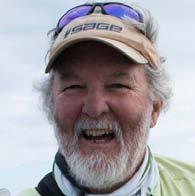

Peter Morse, MCI is a professional Australian fly fisherman of many years who fishes in all waters for all species without prejudice. He is the author of countless magazine stories and 3 books, as well being a television presenter and script writer.
Bintoro Tedjosiswoyo is a CI & THCI who lives in Melbourne, Australia. Bintoro is a commercial graphic designer and illustrator, he is The Loop’s graphic design editor and illustrator.
All correspondence to be addressed to: brian@tncastingmaster.com - Website: http://flyfishersinternational.org/
Copyright © 2019, Fly Fishers International (FFI) The Loop and the individual contributors. All materials contained in this publication are protected by United States copyright law and may not be reproduced, distributed, transmitted, displayed, published or broadcast without the prior written permission The Loop and the author or contributor of that content. However, you may download material from The Loop for your personal, noncommercial use only. Links to Web sites other than those owned by the IFFF are offered as a service to readers. Neither the IFFF nor the editorial staff of The Loop was involved in their production and they are not responsible for their content.
